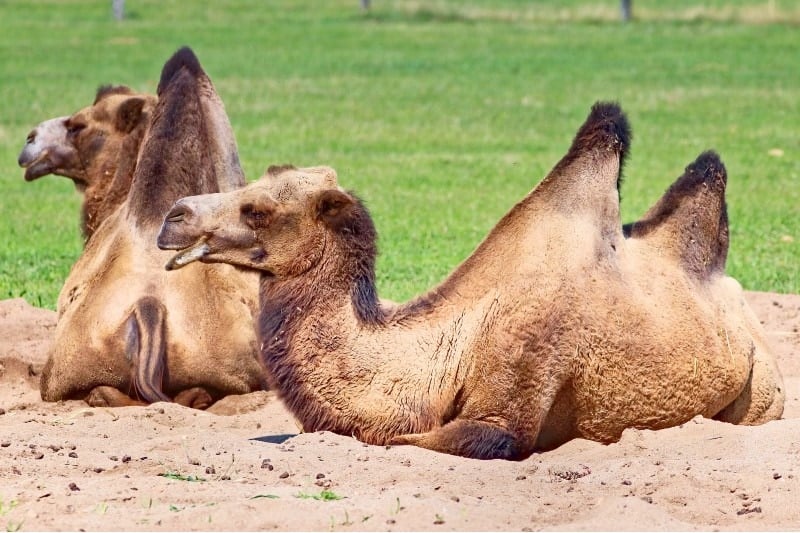Many people believe there are two types of camels—one-hump camels and two-humped camels. However, that’s not precisely true, as there are currently seven types of camels known to mankind.
While we have the typical camels we know and love, several other “new world” animals also belong to the Camelidae family. Together, all of those are commonly known as camelids, which include different animals spread across South America, South Arabia, Asia, North Africa, and Australia.
To give a clearer image of all these animals, we’ll divide them into two categories the Camelini Tribe (Genus Camelus) and the Lamini Tribe (Genus Lama)
Keep reading to learn more about the seven different types of camels and their characteristics.
Click to Skip Ahead:
 The 7 Types of Camels
The 7 Types of Camels
The Camelini Tribe (Genus Camelus)
1. Arabian Camel
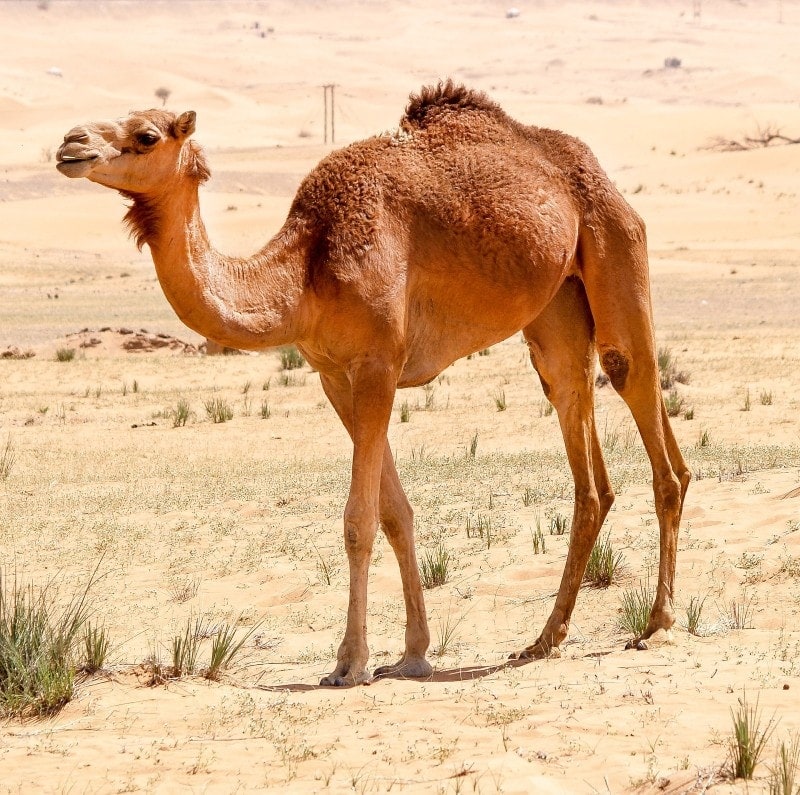
| Species | Camelus Dromedarius |
| Genus | Camelus |
| Family | Camelidae |
| Origin | Arabian Peninsula |
| Size | 7–10 feet |
The Arabian Camel, also known as Dromedary, is a one-humped camel native to the Arabian Peninsula. It’s a large camel that can reach between 7 and 10 feet tall. They have elongated, curved necks and brown, long-haired coats. As their physique had to adapt to the desert and its conditions, Arabian Camels have double eyelids and long eyelashes that protect their eyes from sand, dust, and wind.
These are the most widespread camels and have been domesticated for over 3,500 years. Many cultures keep these camels as pets, while some consume camel meat and milk. Dromedaries typically feed on grass, plants, and saltbush, but they are not picky—when hungry, they’ll eat anything growing in the desert.
One of the most unique things about these camels is they can tolerate up to 30% water loss. That’s something that no other mammal can accomplish, which is quite impressive.
2. Mongolian Camel
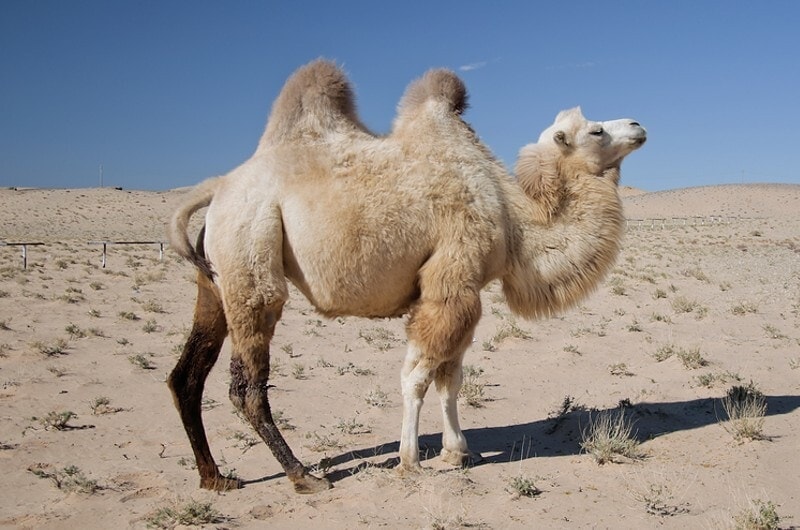
| Species | Camelus Bactrianus |
| Genus | Camelus |
| Family | Camelidae |
| Origin | Central Asia |
| Size | 7–8.2 feet |
The Mongolian Camel, also known as the Bactrian, is a two-humped camel native to Central Asia. Bactrian camels are large in size and can reach over 8 feet, making this camel the largest in the world. They have large, even hooves and wooly, long coats.
There are currently around 2 million of these camels worldwide, and the majority are domesticated. They can withstand all temperatures, from extreme heat to extreme cold, which makes them adaptable to all types of environments.
Mongolian Camels typically feed on plants, grass, and any type of available vegetation in their surroundings. If there’s no vegetation, these camels will also consume skin, bones, flesh, and any type of available material, even if it’s indigestible.
3. Wild Bactrian Camel

| Species | Camelus Ferus |
| Genus | Camelus |
| Family | Camelidae |
| Origin | Central Asia |
| Size | 6–7.5 feet |
The Wild Bactrian Camel is closely related to the Bactrian Camel. However, these camels were never domesticated, and therefore, they belong to an entirely separate species. They have two humps, shorter coats, and even-toed hooves, and you can commonly find them throughout China and Mongolia.
These camels are smaller than other camels of the Camelus genus, typically between 6–7.5 feet high. Unlike the Bactrian Camel, which is not endangered, the Wild Bactrian Camel has been endangered since 2008. Per IUCN, there are only around 1,000 of these camels currently alive, which is why they are preserved in natural reserves.
Wild Bactrian Camels feed on all kinds of vegetation and will also eat flesh and bones, similar to the Bactrian Camels. They are excellent swimmers who are active during the day while resting at night.

The Lamini Tribe (Genus Lama)
4. Alpaca
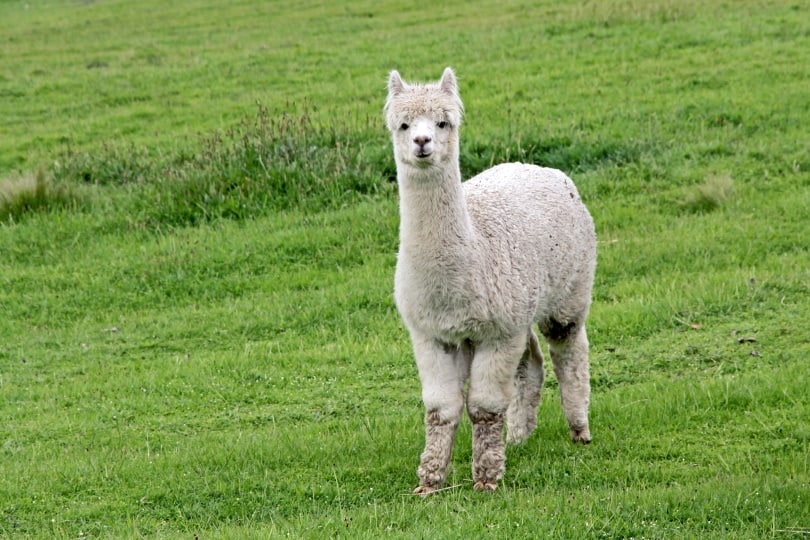
| Species | Lama Pacos |
| Genus | Lama |
| Family | Camelidae |
| Origin | South America |
| Size | 2–3 feet |
Alpacas are small, fluffy animals that belong to the Lama genus. These animals are native to South America and are the cutest new-age camels, reaching only up to 3 feet. People typically breed Alpacas for their wool and use it for making blankets, sweaters, coats, and all kinds of clothing.
You can find Alpacas throughout countries like Peru, Equator, Bolivia, and Chile. There are two types of Alpacas:
- The Huacaya
- The Suri
These camels are intelligent, and they live in hierarchies. Like other camels, vegetation represents their primary food source, so any type of plant is suitable for feeding an Alpaca.
5. Llama
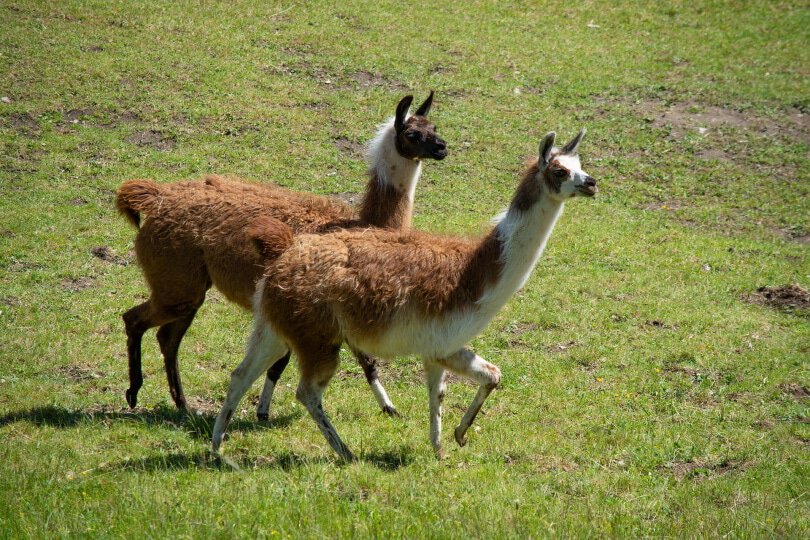
| Species | Lama Glama |
| Genus | Lama |
| Family | Camelidae |
| Origin | South America |
| Size | 5.5–6 feet |
Llamas are domesticated, new-age camels that belong to the Lama genus. Llamas are native to South America, and people primarily breed them for their meat. However, Llamas can be great pets, and they can also guard other animals like sheep or goats.
These camels can reach up to 6 feet and are extremely smart, and you can teach them tricks through repetition. They are social and love to be around humans, which makes them pleasant to be around.
Llamas feed on plants, and they don’t need a lot of water throughout the day. They are great companions and willing pack animals. However, if you overload a Llama, it might not want to move and choose to spit on you instead.
6. Guanaco
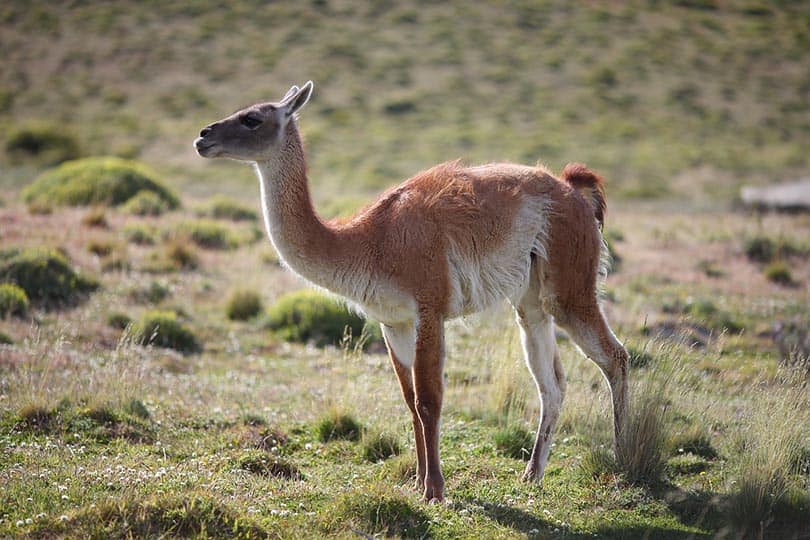
| Species | Lama Guanicoe |
| Genus | Lama |
| Family | Camelidae |
| Origin | South America |
| Size | 3–3.5 feet |
Guanacos are wild camelids that belong to the Lama genus. They are small in size and reach 3.5 feet tall. However, they are heavy, which makes them one of the largest mammals native to South America. These camelids have large heads, short tails, long necks, and pointy ears.
They are fast, which helps them to run away from predators, which is crucial for their survival. Guanacos eat flowers, cacti, grasses, and other vegetation like other camelids. While the Guacano is not domesticated, people are trying to domesticate these animals as their wool is an excellent, soft fabric.
7. Vicuna

| Species | Lama Vicugna |
| Genus | Lama |
| Family | Camelidae |
| Origin | South America |
| Size | 2–3 feet |
Vicunas are another type of wild camelid native to South America. They are the smallest camelid species, reaching only between 2–3 feet tall. Vicunas are not domesticated as their tempers are quite feisty. These camelids resemble Guacanos, but their fur is much lighter on their face and neck base.
The Vicunas are the national animal of Peru, and they are somewhat protected. However, people use them for their coats which are quite pricey. During the time of the Incas, they considered Vicuna wool as something only available for the royals.
 Frequently Asked Questions
Frequently Asked Questions
Where Can You Typically Find Camels?
- Asia
- South America
- North Africa
- Middle East
- Australia
The Bactrian Camels are native to the Bactrian steppers in Mongolia and the Gobi Desert in China. The Dromedary Camels are native to the Middle East and North Africa, while you can also find them throughout Australia.
New-World camelids that include Alpacas, Llamas, Vicunas, and Guanacos are all native to South America and widespread throughout many countries, including:
- Peru
- Bolivia
- Ecuador
- Bolivia
- Argentina
- Chile
Can You Drink Camel Milk?
Camel milk is safe for drinking, and many people worldwide consume it every day. It’s a healthy substitute for other types of milk as it’s low in sugar and cholesterol. You can consume it raw, and there’s no need to heat it.
Another excellent thing about camel milk is that it’s high in antioxidants, which keep your cells healthy.
 Conclusion
Conclusion
At a first glance, it may appear as if there are only two types of camels, but as you can see, there’s more to the picture than meets the eye. Although only three types of camels are real camels, other camelids (Alpacas, Llamas, Vicunas, and Guanacos) are also camels, and they are equally important for our ecosystem.
Featured Image Credit: Dušan, Pixabay
